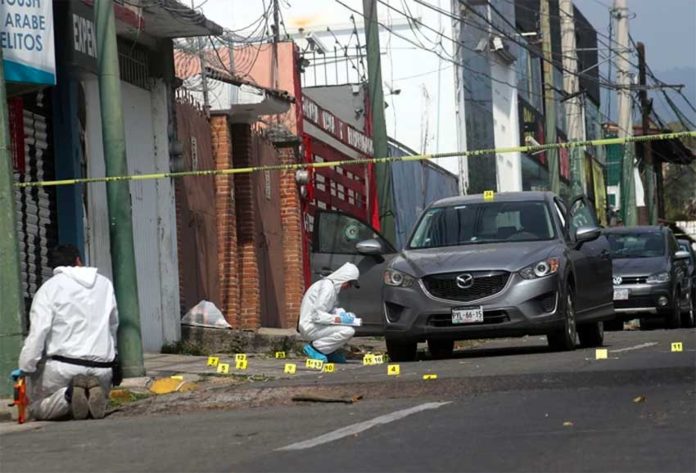The December National Survey on Urban Public Security reveals that more than 90% of the adult population in eight cities feel unsafe where they live.
Topping the list compiled by the national statistics institute, Inegi, was the border city of Reynosa, Tamaulipas, torn by violence generated by warring drug gangs. There, 96% of inhabitants older than 18 feel unsafe.
Next up was Chilpancingo, Guerrero, with 93.8%, followed by 93.4% in the cities of Puebla, Coatzacoalcos, Veracruz, and Ecatepec, México state.
Not far behind were Villahermosa, Tabasco, with a rate of 92.3%; Tlalnepantla, México state, with 90.4%; and Fresnillo, Zacatecas, where 90.1% of its adult population live in fear.
Some of the cities further down on the list were notable for the change since December 2017. In Piedras Negras, Coahuila, the rate was 61.9% but that’s up more than 20 points in one year.
Others were Guanajuato where the rate rose over 19 points to 79.6%; Guadalajara, where it increased more than 15 points and reached 86.8%; and Monterrey, Nuevo León, where the number of people who felt unsafe increased by more than 13 points over the previous year, reaching 84.4%.
Nationally, 73.7% indicated they felt unsafe.
Broken down by gender, 78% of women reported feeling unsafe. Among men the figure was 68.6%.
The national survey also found that over one-third of Mexican households have been victims of theft or extortion.
As for the future, there are great expectations.
While only 17% thought things would get better at the end of 2017, the number soared to 41.4% at the end of 2018, the highest rate ever recorded and one that probably stems from the public’s high hopes for President López Obrador.
At the bottom end of the insecurity spectrum lay the city of San Pedro Garza García, Nuevo León, with 23.1%, the lowest rate in the country.
It was followed by Mérida, Yucatán, at 28.8%; Saltillo, Coahuila, at 30.5%; Puerto Vallarta, 38.7%; Durango, 39.5%; and Los Cabos, 42.3%.
Source: El Universal (sp)
